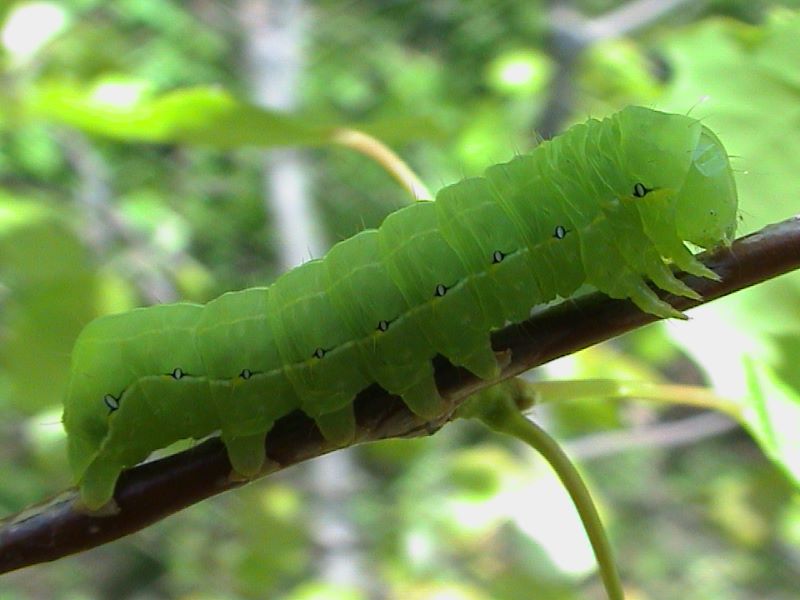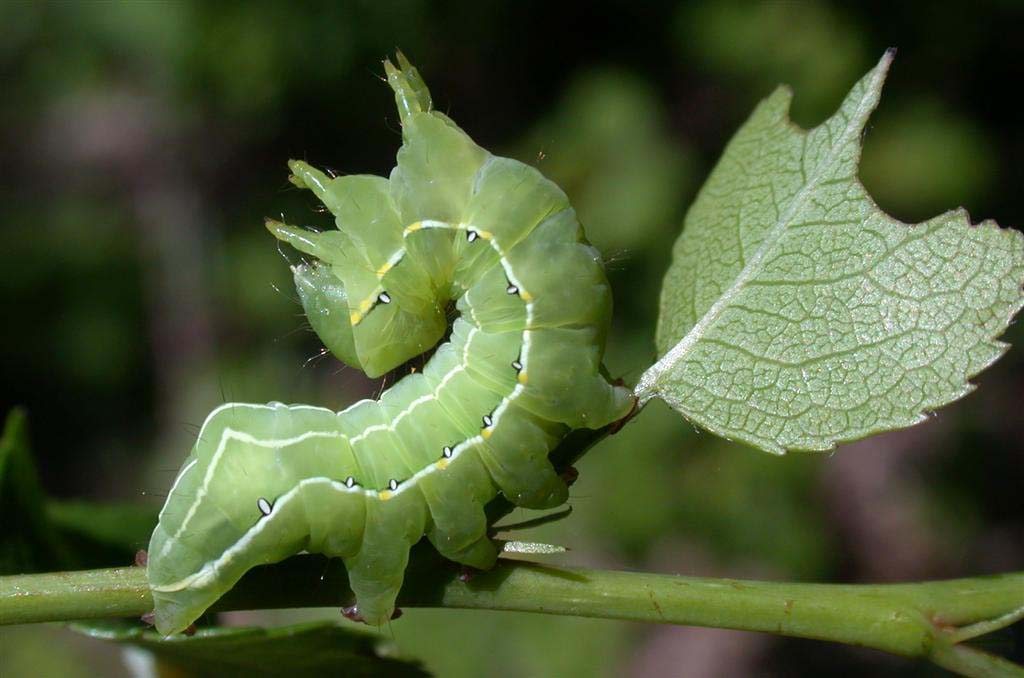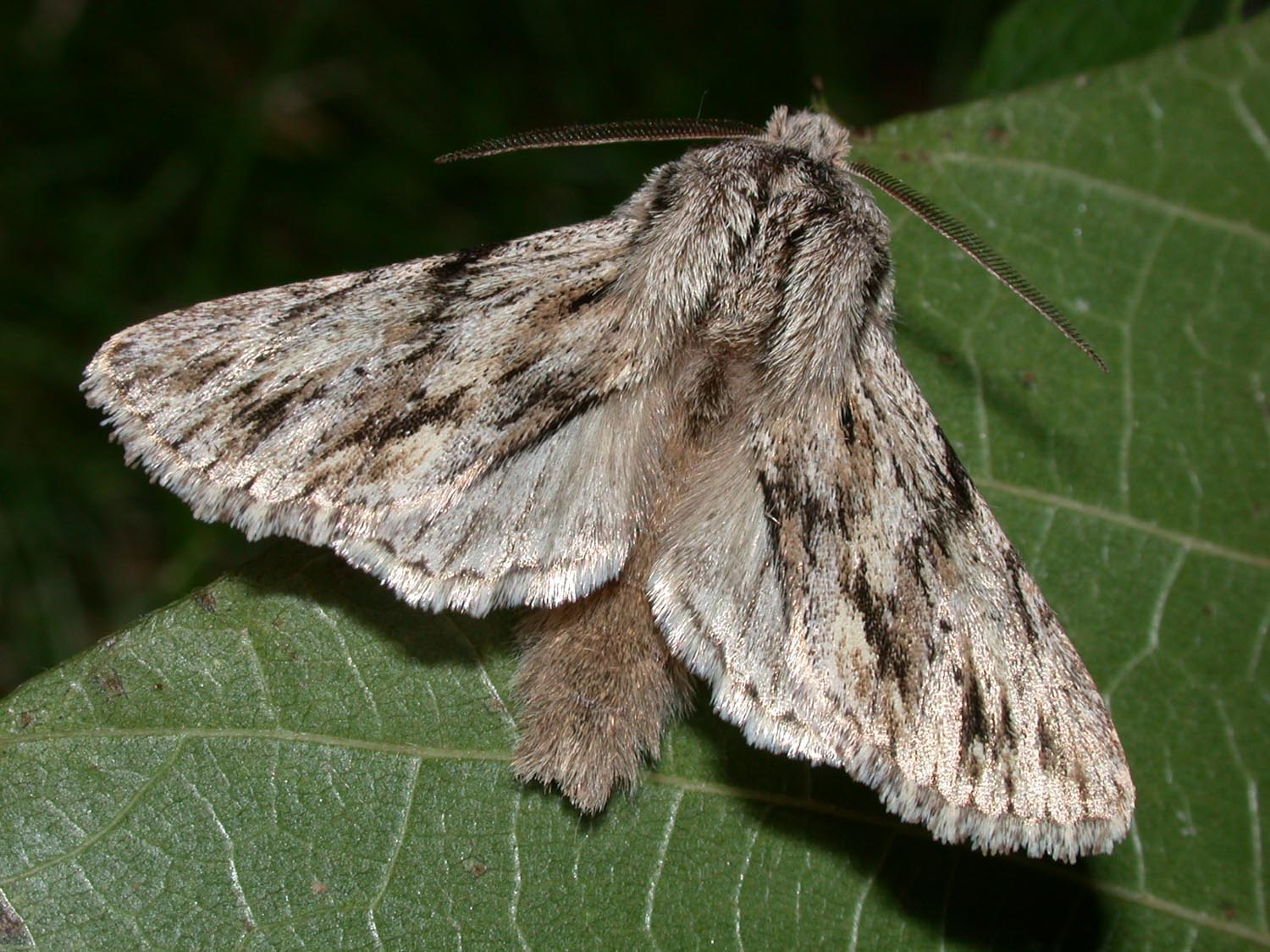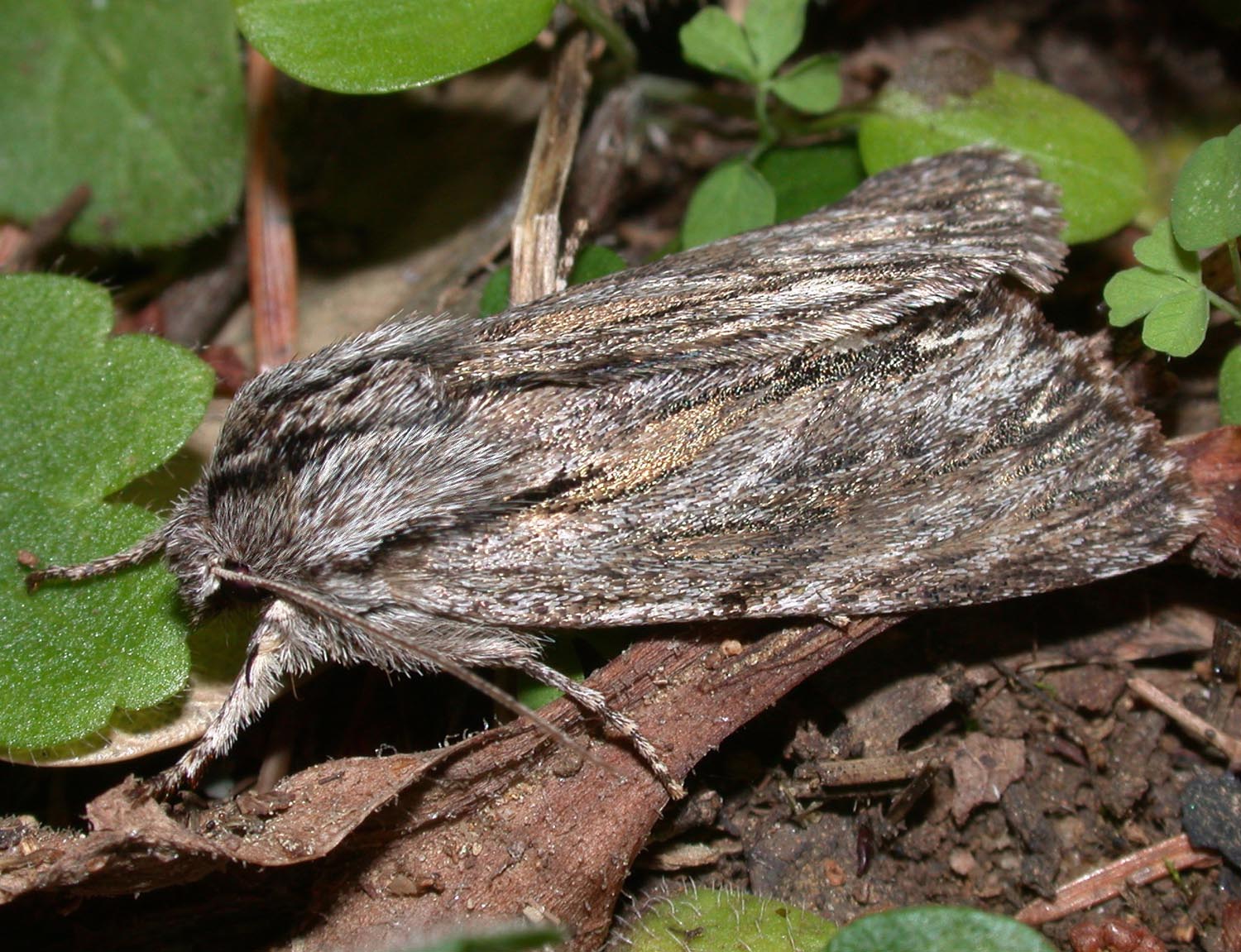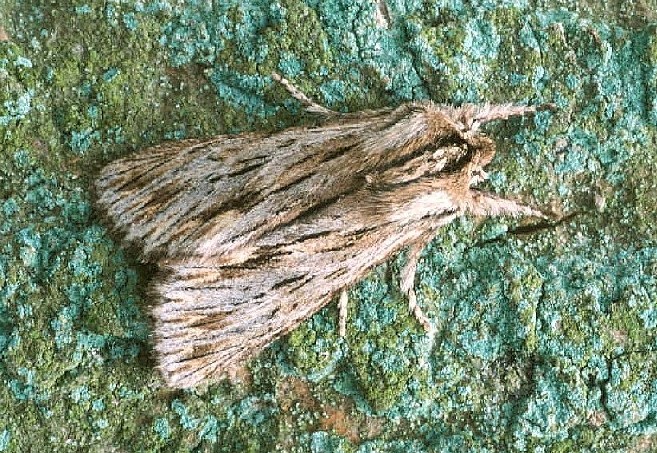Asteroscopus sphinx
Autumn Rauhaareule ( Asteroscopus sphinx )
The Autumn Rauhaareule ( Asteroscopus sphinx ), also Linden Rauhaareule or Sphinxeule called, is a butterfly (moth ) from the family of cutworms ( Noctuidae ).
- 5.1 Literature
- 5.2 Notes and references
Features
Butterfly
The wingspan is about 42 to 50 millimeters. The color of the forewing is quite variable, varies from off-white and ash-gray to brown to gray or black gray and is crossed by dark stripes. Toggling are indistinct or absent. Rise to the shaft line from occasional white spots. The hind wings are white to off-white and have a pale brown spot near the inner edge. The proboscis of the moths is stunted. The antennae of the males are combed, those of the females do not.
Egg, caterpillar and chrysalis
The egg is very flat, has a beaded edge and strong ribs. It is colored in various shades of gray. Young caterpillars are yellow-gray with black spots usually. Adults caterpillars have a green color, narrow, white back, back and side lines, a yellow-white side stripes and white spiracles, which are black edged. Typical of the caterpillar is the sphinx -like resting position with erect and bent-back head, which is also responsible for the naming of the species. The red-brown doll is stocky and has two peaks on the long, stem-like cremaster.
Similar Species
- Asteroscopus syriaca (Warren, 1910). This species is usually smaller than sphinx, has on the fore wings more predominant grays which are also often dusted slightly blue and clear bulging cross lines and rounded hind wings. Due to the large variability in color unambiguous distinction is still possible only by means of a genital examination.
Distribution and habitat
The species is widespread in Europe, especially in the central regions, north to England, Denmark and southern Sweden, east to Kaliningrad and Moscow, south to northern Spain, the Alpine region, central Italy and northern Greece. It also occurs in Turkey and the Caucasus. The Autumn Rauhaareule is to be found in deciduous and mixed forests, but also in more open terrain, such as hedges, gardens, parks and avenues.
Way of life
The moths appear very late in the year and fly in October and November. They are nocturnal and fly very much like artificial light sources, but mainly the male moths. After Haeger, the ratio of males to females is the light 40:1. Often they are also found in street lights and other light sources and are even still at a temperature of 3 ° C active. Because of the vestigial proboscis moths take no food. The caterpillars live in May and June, sometimes even in April. They are polyphagous and feed on a variety of plants, one of which is mentioned here only a selection:
- Linde species ( Tilia ),
- Species of willow ( Salix),
- Species of oak (Quercus ),
- Book species ( Fagus ),
- Species of poplar (Populus ),
- Blackthorn (Prunus spinosa),
- Hazel species ( Corylus ),
- Fruit tree species
And others. Pupation takes place in the earth. The egg overwinters.
Endangering
In Germany the species is widespread, territory as numerous, though it is often overlooked because of the very late flight time. On the red list of endangered species is classified as not at risk.


